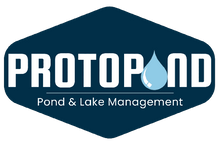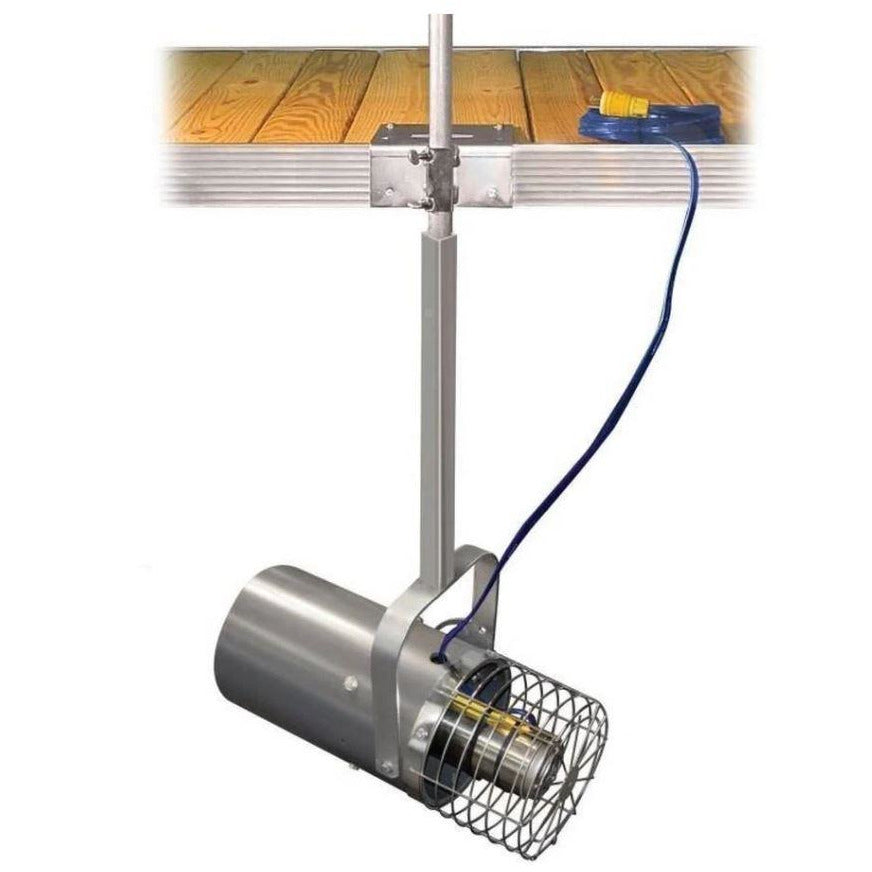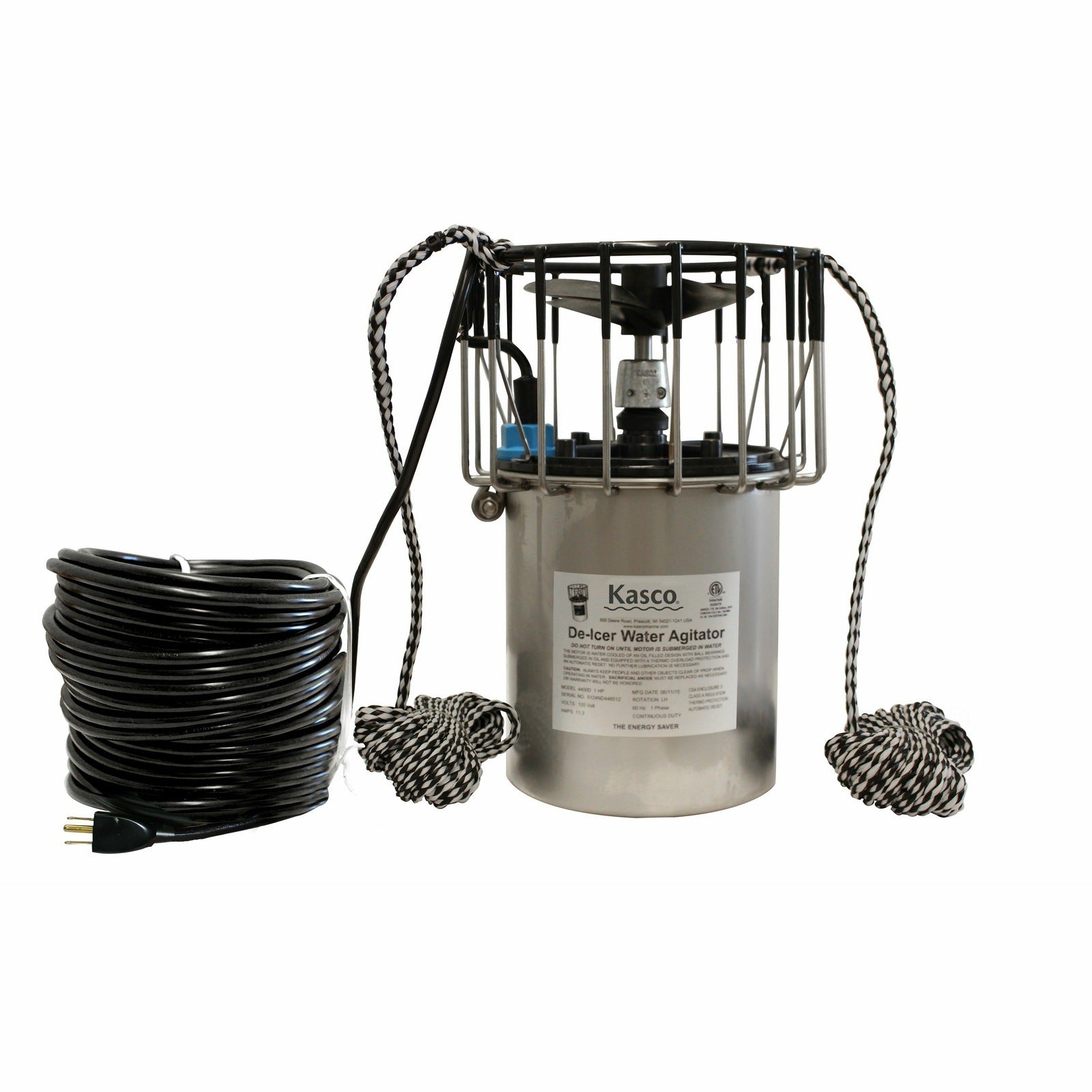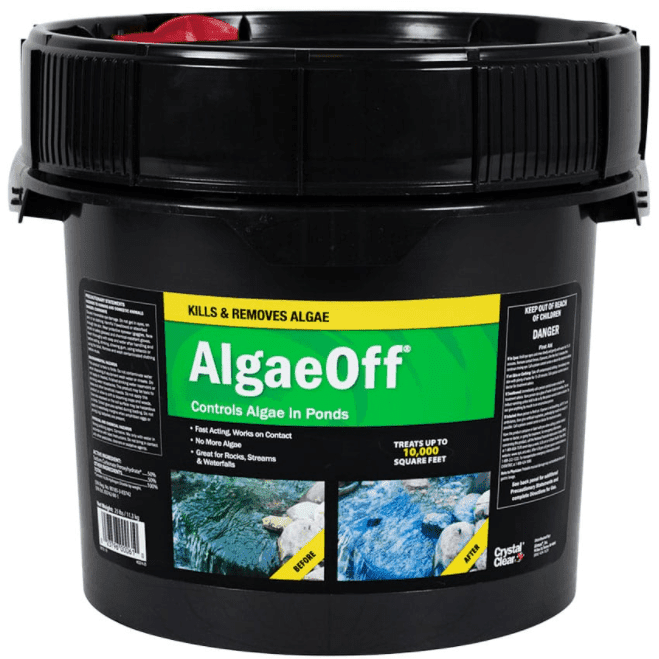You've been planning a pond for your home, and you may have the questions: What do I do about aeration? Is aeration necessary for my pond? What happens if my pond is not aerated properly? What are the best pond aerators?
You may be wondering, what even is pond aeration? Regardless of the body of water - pond or lake, small, big, natural, man-made etc. aeration is a very critical component for a sustainable balance within the water's ecosystem. In this article, we will help you understand the process of aeration, its importance, and which type of aerator suits your pond or lake.
Why Does My Pond Need Aeration?
To boil the answer down to one word: oxygen.
Oxygen is the important element for the existence of life on our planet. So it should come as no surprise that oxygen is also a major constituent of water.
Let’s break down the phenomenon that leads to the need for aeration.
In any body of water, the water consists of stratified layers. These are not the physical, visible layers. However, these layers are formed due to temperature differences and oxygen levels at different depths and areas of the waterbody.
All underwater animal species require an adequate level of dissolved oxygen in the water to survive. But the stratification of oxygen concentration leads to problems for the habitat of underwater species. For example, cold water has a higher oxygen level than warm water. So especially in climates with strong seasonal changes in temperature, a balance is crucial in order to sustain a healthy pond ecosystem.
Aeration is the phenomenon that helps to stabilize the levels of dissolved oxygen across the whole body of water. As a result, water species have a greater area to mobilize and live rather than being bound to a single layer with a particular temperature.
What Is Aeration?
Aeration is the process of increasing, equalizing and maintaining dissolved oxygen levels throughout a body of water.
The process of aeration is essentially done by moving subsurface water to the surface in mass volume. This can be done mechanically with aerators that promote contact between water and air to increase oxygen. Aeration is not only done by using artificial means as it can also occur naturally. Winds, waterfalls, and heavy rains are some natural examples of aeration.
Beyond promoting a healthy aquatic ecosystem, there are many other benefits offered by aeration. Let’s discuss the importance of aeration for the overall health of your aquatic system.
Many problems add to the importance of pond aeration. In addition to fish-killing, climate-changing seasons, a foul smell can be a result of stratification. Here are some benefits of water aeration to imply its importance for ponds.
Improved Water Quality
The process of aeration improves overall water quality. Waterbodies with poorly aerated water experience various problems such as gases and metals that are harmful and dangerous. Proper aeration stabilizes Ph levels and reduces alkalinity and carbon dioxide levels. You can save a major cost of pond maintenance and treatments by installing an aeration system.
Healthy Aquatic Ecosystem
Poor aeration is a great threat to the life within an aquatic ecosystem. As a result of thermocline collapse in temperate regions, a large amount of aquatic life dies every winter. Proper pond aeration can significantly help avoid this. Oxygen depletion can be controlled by a quality aerator to preserve aquatic animals and species.
Reduction In Pond Algae And Muck
Green algae on the upper surface of the water is never pleasant. Lack of proper aeration will ultimately lead to a large amount of algae growth. This is due to higher exposure to sunlight and elevated phosphorus concentrations. When a waterbody is properly aerated, phosphorus atoms bind with iron atoms as a result of the oxidation reaction. When this happens, the phosphorus atoms become unavailable for the algae to metabolize and the result is a much cleaner pond.
Aside from surface algae, stratification results in a foul-smelling muck at the bottom of a waterbody. This muck results from the aerobic bacteria’s inability to break down organic materials due to lack of oxygen. As a result, the organic material accumulates and rots.
Other benefits of proper water aeration include reduction in mosquito problems, better smelling water, and elimination of unwanted bacteria in water.
Different Types Of Aerators
We know the importance of proper aeration for the health of a waterbody. However, choosing an appropriate aerator is the most challenging part. The type of aerator you will buy highly depends on several factors. For instance, a large, deep lake will have different aeration requirements than a small, shallow fish pond at your bungalow. Below are some factors to consider:
- Overall area of pond or lake
- Shape
- Desired aesthetics,
- Proximity to electric supply
- Average water depth
We have listed some common aerators and the intended use of each of them.
Bottom Diffused System
Bottom diffused systems are like underwater ‘bubblers’ that move water from the bottom to the upper surface. Water at the bottom level contains inadequate levels of dissolved oxygen for aquatic microbes. With a bottom diffused system, the interaction of water with atmospheric oxygen tends to spread horizontally with a wide radius. This is done without disturbing surroundings or aquatic life.
These aeration systems are most commonly used for deep bodies of water with an average depth of more than 10 feet. It is a more cost-effective solution.
Surface Aeration
Surface aeration is typical for shallow waters with an average depth between 6 to 10 feet. These can be categorically described as fountains, volcanos, and paddle wheels.
Floating Fountain
Floating fountains are a good choice for shallow bodies of water. They are also aesthetically very appealing and circulate large amounts of water throughout the day. Such aerators are best for small ponds and lakes. A single fountain aerator can do the job quite well for a shallow, small pond.
Final Words
Aeration is truly a necessary component when building a pond or caring for a body of water. No two waterbodies are the same, and each has different requirements of aeration. Give ProtoPond a call today or send us an email, and a member of our team will respond to you promptly and assist you with your search.














2 comments
Pond Repair
Very informative pond repair blog. Aeration can create a healthy environment within the pond for aquatic life like fish, plants, etc. I’d like to recommend Pond Pro 2000, it’s the top-trusted pond sealer because of its durability, it’ll last three times more than all other pond sealer materials available in the market. It’s a liquid butyl rubber that’s UV-resistant and non-toxic pond sealer so it’s safe for fish, plants, and other aquatic life within the pond.
http://www.pondpro2000.com/epdm-pond-liner.php
Brad Davies
Gidday there
I am enquiring from New Zealand as to options if any to improve water quality and reduce scum buildup and weed growth in our feature pond. The pond has been established for many years and is largely spring fed and covers approx 1.25 acres. The pond is not that deep ranges from 2 feet at the shallow end to 5 feet in deeper end it is not lined so is earth bottom lake. The issues are greater in the shallow end with unsightly scum buildup and weed growth, we have just cleared with a long reach digger but would like to find a solution. I wonder how effective multiple bottom diffusers would be in what is not a deep pond.
Will either bottom or fountain type systems give the spread of aeration across the pond surface in this depth of water or will the improvement only occur where they are situated. I would be interested in your comments or suggestions, regards Brad